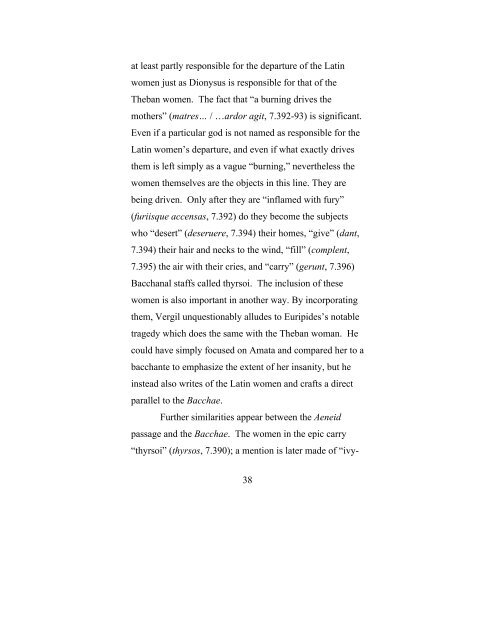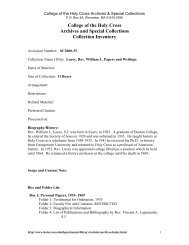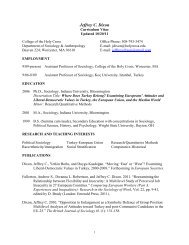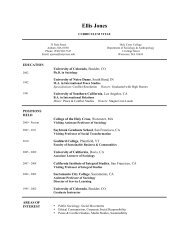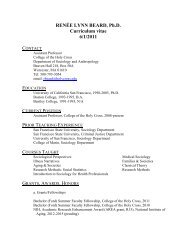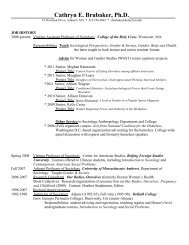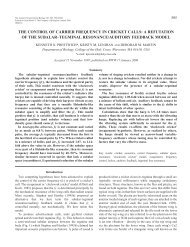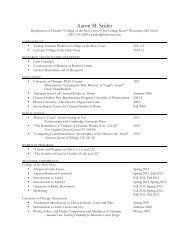Here - Academics - College of the Holy Cross
Here - Academics - College of the Holy Cross
Here - Academics - College of the Holy Cross
Create successful ePaper yourself
Turn your PDF publications into a flip-book with our unique Google optimized e-Paper software.
at least partly responsible for <strong>the</strong> departure <strong>of</strong> <strong>the</strong> Latin<br />
women just as Dionysus is responsible for that <strong>of</strong> <strong>the</strong><br />
Theban women. The fact that “a burning drives <strong>the</strong><br />
mo<strong>the</strong>rs” (matres… / …ardor agit, 7.392-93) is significant.<br />
Even if a particular god is not named as responsible for <strong>the</strong><br />
Latin women’s departure, and even if what exactly drives<br />
<strong>the</strong>m is left simply as a vague “burning,” never<strong>the</strong>less <strong>the</strong><br />
women <strong>the</strong>mselves are <strong>the</strong> objects in this line. They are<br />
being driven. Only after <strong>the</strong>y are “inflamed with fury”<br />
(furiisque accensas, 7.392) do <strong>the</strong>y become <strong>the</strong> subjects<br />
who “desert” (deseruere, 7.394) <strong>the</strong>ir homes, “give” (dant,<br />
7.394) <strong>the</strong>ir hair and necks to <strong>the</strong> wind, “fill” (complent,<br />
7.395) <strong>the</strong> air with <strong>the</strong>ir cries, and “carry” (gerunt, 7.396)<br />
Bacchanal staffs called thyrsoi. The inclusion <strong>of</strong> <strong>the</strong>se<br />
women is also important in ano<strong>the</strong>r way. By incorporating<br />
<strong>the</strong>m, Vergil unquestionably alludes to Euripides’s notable<br />
tragedy which does <strong>the</strong> same with <strong>the</strong> Theban woman. He<br />
could have simply focused on Amata and compared her to a<br />
bacchante to emphasize <strong>the</strong> extent <strong>of</strong> her insanity, but he<br />
instead also writes <strong>of</strong> <strong>the</strong> Latin women and crafts a direct<br />
parallel to <strong>the</strong> Bacchae.<br />
Fur<strong>the</strong>r similarities appear between <strong>the</strong> Aeneid<br />
passage and <strong>the</strong> Bacchae. The women in <strong>the</strong> epic carry<br />
“thyrsoi” (thyrsos, 7.390); a mention is later made <strong>of</strong> “ivy-<br />
38


